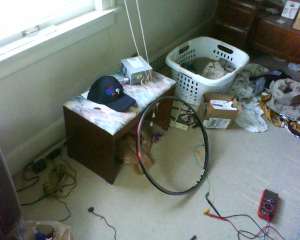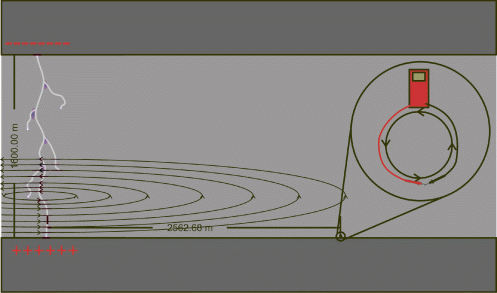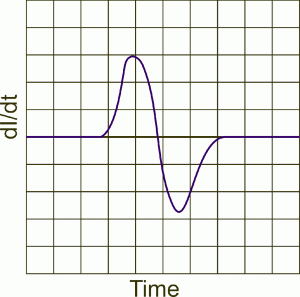Fairly involved process when you don’t have a radar gun. But possible.
Procedure:
Fire projectile a total distance of 24.5ft. Record the shot with video and sound. Analyze sound waveform to find firing time and projectile impact time. Here is the setup.
To accurately model the velocity of the projectile, assume that while the projectile is in the tube, it is accelerating at a constant rate. Then assume that this velocity is maintained until it makes contact with the target (which is quite incorrect. Therefore, this models the average velocity after the projectile leaves the tube).
Total time was found by analyzing this waveform (peaks indicate the two “thuds.” Thuds are verified by listening to the waveform:
Assignment of variables:
-Any subscript of 1 will pertain to the interval when the projectile is in the tube.
-Any subscript of 2 will pertain to the interval when the projectile has left the tube.
-Any subscript of 3 will pertain to the combination of the first interval and the second interval.
Known Variables:
D1 = 10ft
D3 = 24.5ft
D2 = 14.5ft
T3 = .119 sec
Relationship between distance:
D1 + D2 = D3
Substitute velocity and time for distance:
V1T1 + V2T2 = D3
Assume that V1 = V2/2 (During constant acceleration with zero initial velocity, average velocity is exactly half of the final velocity. Since V1 represents the average velocity while in the tube and V2 represents the final velocity, V1 = V2/2).
Therefore, when substituting for V1:
T1V2/2 + V2T2 = D3
We’re trying to find V2, and we don’t know T1 or T2, so we must use some relationships to figure out what they are.
Relationship 1: T1 + T2 = T3
Relationship 2: V1T1 = D1
We must manipulate relationship 2 to a more useful form (get rid of V1):
V2T1/2 = D1
T1 = 2D1/V2
Now, going back to the original equation:
T1V2/2 + V2T2 = D3
Plug in for T1 and simplify:
2D1*V2/(2*V2) + V2T2 = D3
D1 +V2T2 = D3
Now plug in for T2:
D1 + V2(T3 – T1) = D3
Plug in for T1 again and simplify:
D1 + V2(T3 – 2D1/V2) = D3
D1 + V2T3 – 2D1 = D3
V2 = (D3 + D1)/T3
^^ That’s the equation we were looking for. Elegantly simple if you ask me. Now we can plug in actual data.
V2 = (24.5 + 10)/.119 = 290ft/sec = 198mph.
And just as a reminder, this is the average speed after leaving the tube. Therefore, the velocity when immediately leaving the tube is likely to be significantly higher than the average.
Might explain how it:
-Absolutely destroyed full soda cans
-Went inside a full bike water bottle
-Went all the way through an empty bike water bottle
-Went all the way through an unopened bottle of myoplex.










